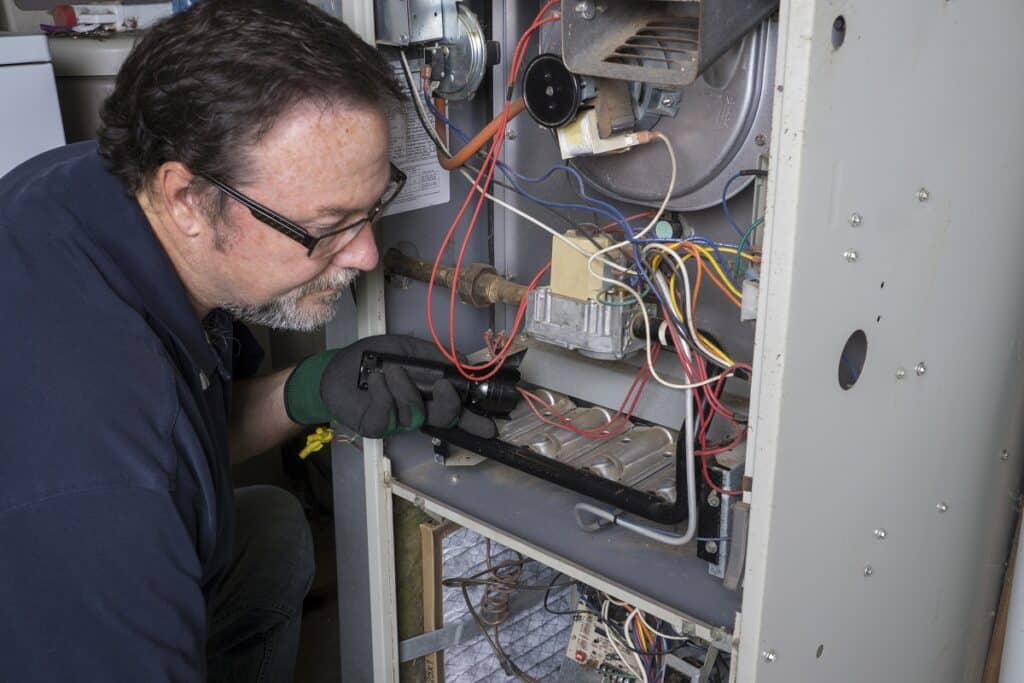Furnaces are constantly running in the background to provide warmth during the freezing winter months. Few people stop to consider how these systems work. Let’s take a peek inside and unravel the mystery of how the components of furnaces work together to generate heat.
The Control Center: The Thermostat
The thermostat is the brain of the furnace operation. It acts like a boss giving orders, constantly monitoring the temperature inside your house. When the temperature dips below your desired setting, the thermostat sends a signal to the furnace to let it know it’s time to get to work.
Fueling the Fire: The Burner
Once the thermostat gives the green light, the burner swings into action. The burner is like a tiny chef preparing a flame. Depending on the type of furnace, the burner uses natural gas, oil, or propane as its fuel. When the furnace receives the signal, a valve opens, allowing the fuel to flow to the burner. An igniter, like a tiny spark plug, then creates a spark, igniting the fuel and creating a flame.
The Heat Exchanger: Transferring the Warmth
The burner creates heat, but it doesn’t directly heat your home. That’s the job of the heat exchanger. Imagine the heat exchanger as a giant metal pot. As the flame burns, it heats up the metal walls of the heat exchanger. A fan blows cold air from your house over the hot heat exchanger. This air absorbs the heat and becomes warm itself.
Distributing the Warmth: The Blower and Ducts
The newly heated air doesn’t just magically appear in your rooms. A blower fan inside the furnace acts like a super-powered air pump. It pushes the warm air from the heat exchanger through a network of ducts installed throughout your house. These ducts are like invisible hallways that deliver warm air to vents in each room.
Essential Safeguards
Furnaces come equipped with important safety features. A flame sensor, for example, continuously monitors the burner flame. If the flame goes out for any reason, the sensor shuts off the gas supply to prevent a gas leak. Additionally, a limit switch keeps the furnace from overheating by automatically shutting it down if the temperature inside gets too high.
Keeping Things Clean With the Filter
A furnace filter acts like a tiny net that traps dust, dirt, and allergens in the air before it is blown into your home. Regularly cleaning or replacing the filter is important to maintain good air quality and ensure that the furnace operates efficiently.
For all these components to continue to function optimally, professional maintenance once each year is required. During maintenance, an HVAC technician will thoroughly inspect your system to find and fix small problems to keep them from becoming something major. They will also professionally clean all parts so that they remain in good order. For furnace repair and maintenance in Tallahassee, FL, call Payne Heating and Air for help.










